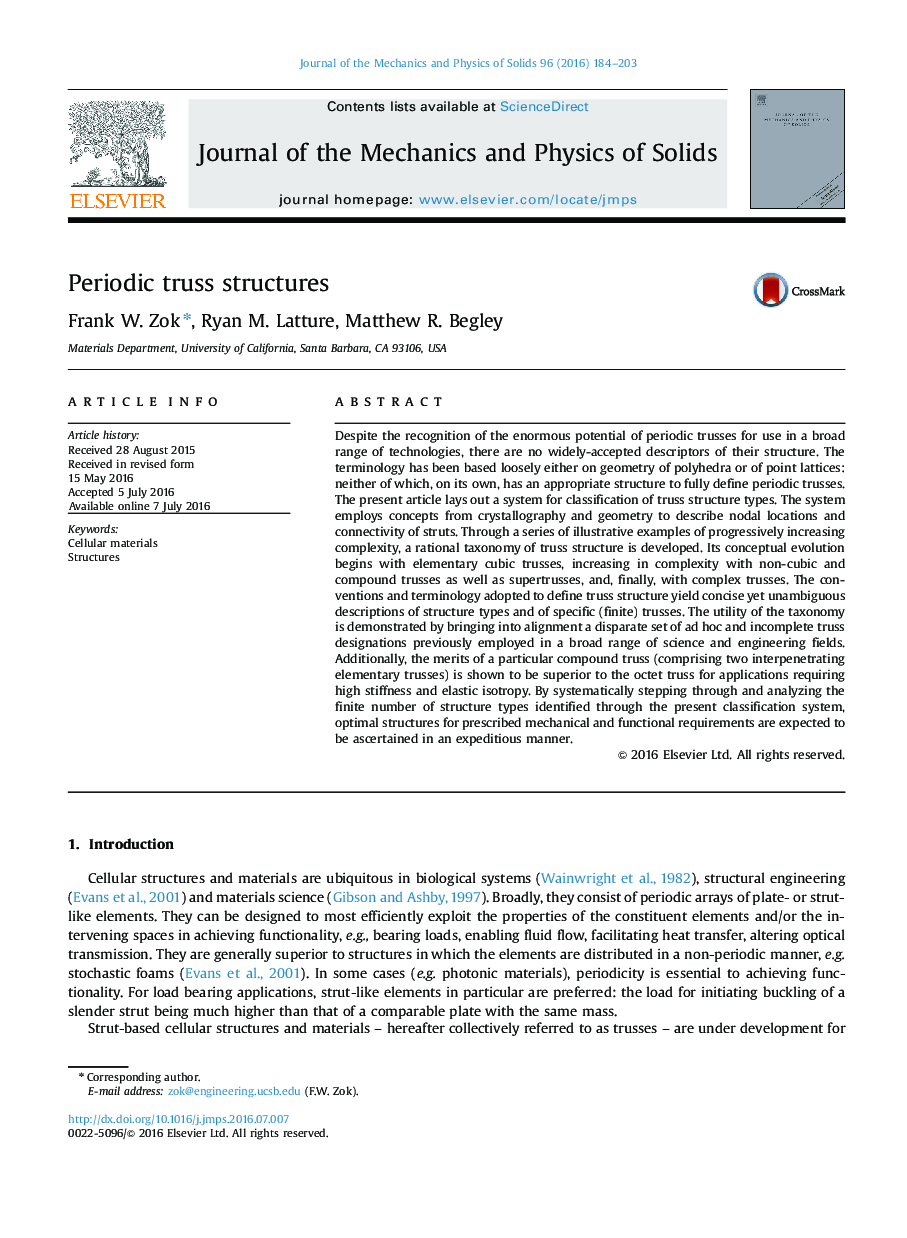| Article ID | Journal | Published Year | Pages | File Type |
|---|---|---|---|---|
| 797719 | Journal of the Mechanics and Physics of Solids | 2016 | 20 Pages |
•A rational system for description of periodic trusses is presented.•The system is applied to a disparate set of truss designations employed previously.•Effects of structure type on elastic response are probed by numerical simulation.•A specific compound truss is shown to be superior to the octet truss.•The system provides a pathway to identifying optimal structures expeditiously.
Despite the recognition of the enormous potential of periodic trusses for use in a broad range of technologies, there are no widely-accepted descriptors of their structure. The terminology has been based loosely either on geometry of polyhedra or of point lattices: neither of which, on its own, has an appropriate structure to fully define periodic trusses. The present article lays out a system for classification of truss structure types. The system employs concepts from crystallography and geometry to describe nodal locations and connectivity of struts. Through a series of illustrative examples of progressively increasing complexity, a rational taxonomy of truss structure is developed. Its conceptual evolution begins with elementary cubic trusses, increasing in complexity with non-cubic and compound trusses as well as supertrusses, and, finally, with complex trusses. The conventions and terminology adopted to define truss structure yield concise yet unambiguous descriptions of structure types and of specific (finite) trusses. The utility of the taxonomy is demonstrated by bringing into alignment a disparate set of ad hoc and incomplete truss designations previously employed in a broad range of science and engineering fields. Additionally, the merits of a particular compound truss (comprising two interpenetrating elementary trusses) is shown to be superior to the octet truss for applications requiring high stiffness and elastic isotropy. By systematically stepping through and analyzing the finite number of structure types identified through the present classification system, optimal structures for prescribed mechanical and functional requirements are expected to be ascertained in an expeditious manner.
